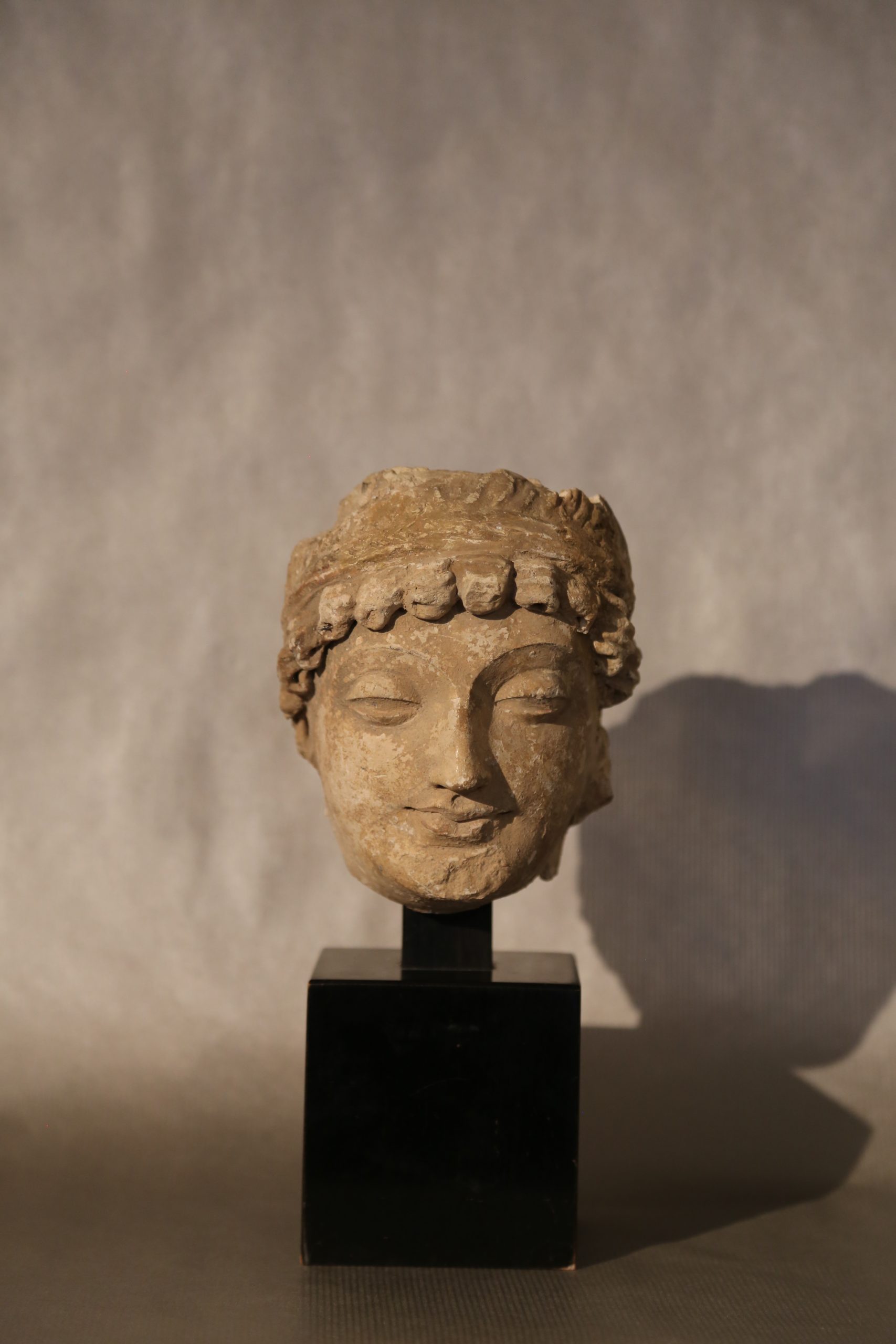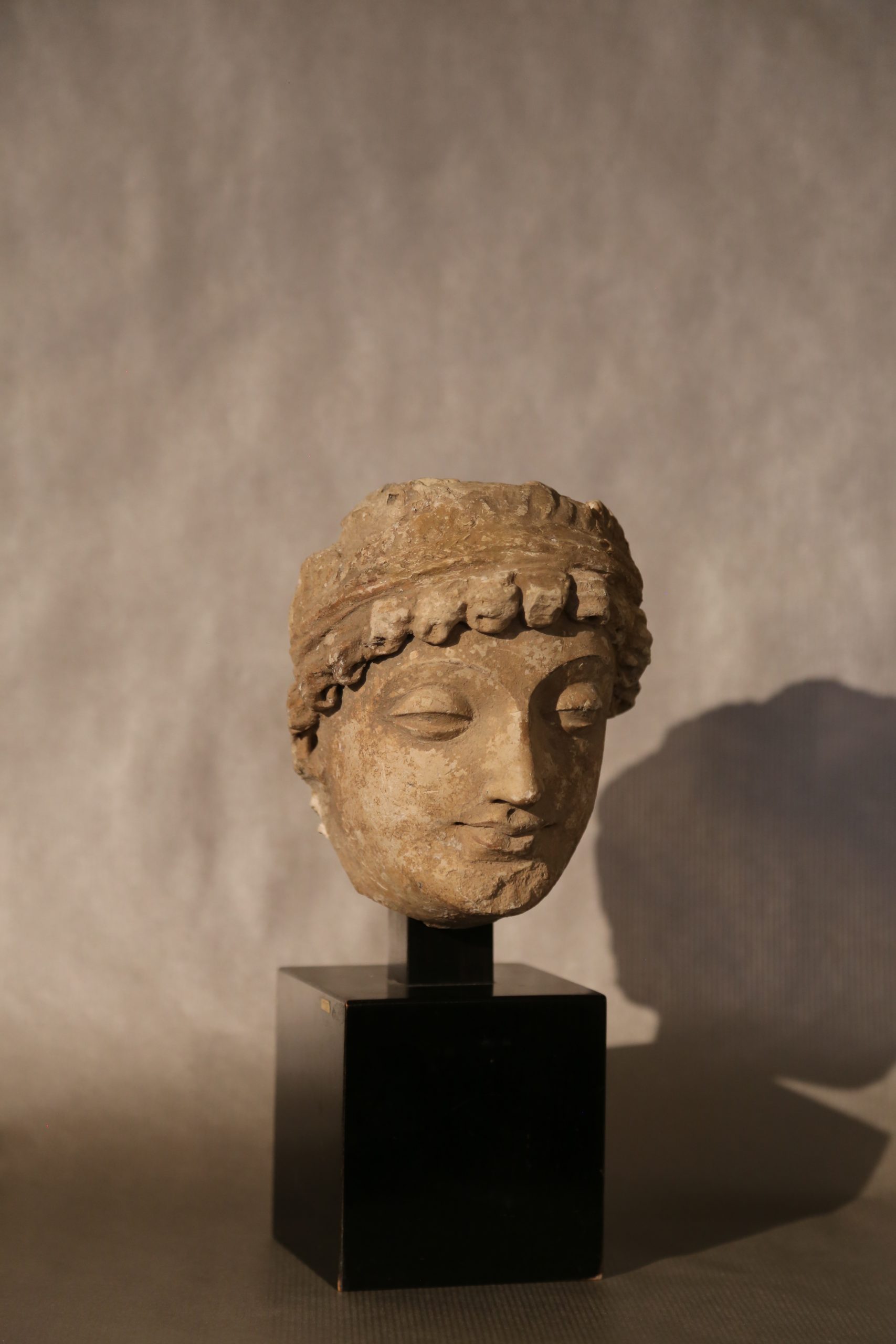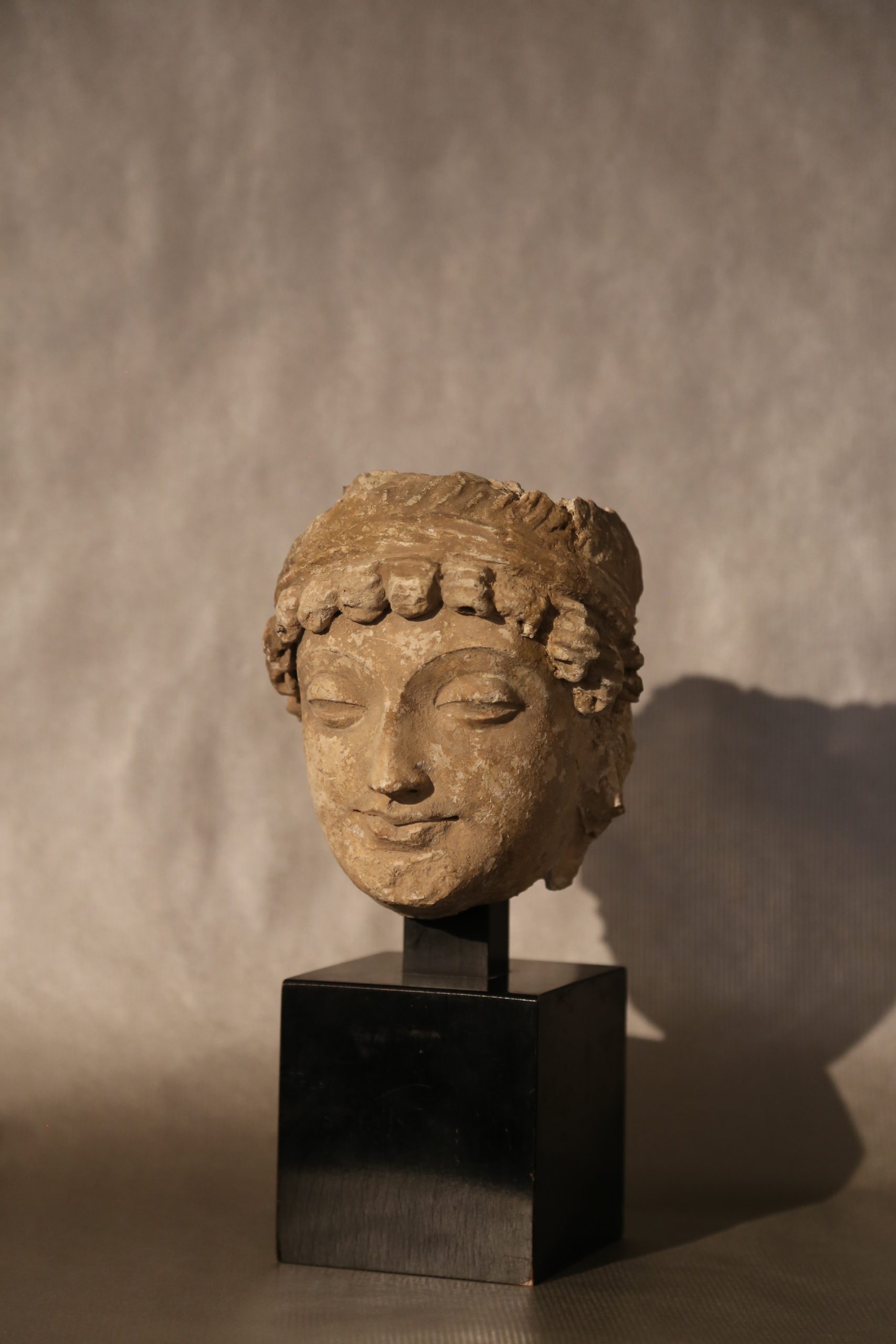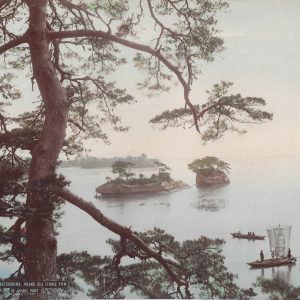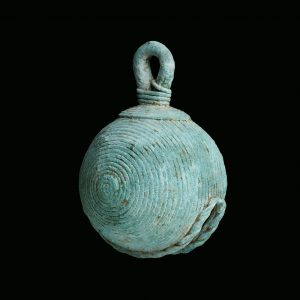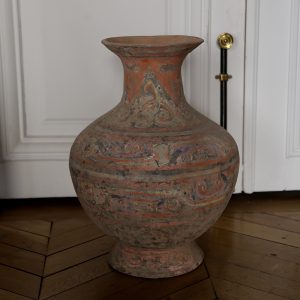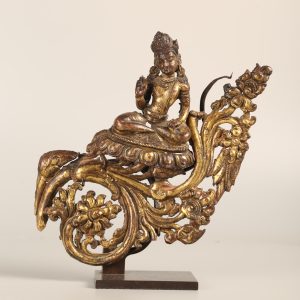Head of Bodhisattva
Stucco
Ancient region of Gandhāra
4th – 5th century
H. 15 cm or 5 ⅞ in
Description
A devotee looking alike a bodhisattva
This bodhisattva has a remarkable face, drawing an almost perfect oval and imbued with serenity. The head gives off according to the codes of “Greco-Buddhist” art of Gandhāra a feeling of fullness and piety. The eyelids, half-closed, are the sign of his deep meditation, while the mouth, small and fleshy, very nicely modelled, outlines a delicate smile. This expression is reminiscent of that of the stucco Buddha and bodhisattva, made during the same period and for which comparable examples can be found in major museums. A major role in Gandharan iconography is played by bodhisattva, spiritual beings “promised to an Awakening”, a specific state of historical Buddha before their “Enlightenment”. They cannot go backwards in the cycle of reincarnation, feel compassion for all sentient creatures of the earth and only wish to break free of the causal loop along with them. These characters have become one of the major specificities of the Buddhism of the Great Vehicle (Mahāyāna).
A witness of the Art of Gandhāra found at the border of Afghanistan and Pakistan
Thin incisions characteristic of sites in Afghanistan, notably Hadda, outline the almond-shaped eyes, delineate the eyebrows, mark the nostrils, and accentuate the contour of the lips. We should also note as a distinctive feature of these works the depression in the middle of the chin, under the mouth. Drawing a characteristic fringe on the forehead, joined and regular curls separate from the rest of the hair. This consists of strands of hair pulled backwards that rose into a flattened bun from which longer wavy curls or ribbons fell. A braided headband holds and adorns the whole.
The stucco: a great freedom of treatment
Stucco was used brilliantly throughout Gandhāra craftmanship’s History, notably in the sites of Hadda in Afghanistan and Taxila in Pakistan. The statues were made by using molds, the resulting shapes picked up with a spatula. This technique allows a lot of ease in the treatment and to obtain, as here, faces with an incredibly supple shape. The mouth, with its particularly sensitive production, is a fine example. Often, the finer stucco heads were fired separately and glued to the bodies with slush. This donor’s head was to participate in the decoration of the exterior courtyards of the monasteries, accessible to devotees. A thin slip – still very evident over the entire surface – covered the whole, concealing any disparity and bearing a rich polychromy of red, ocher and black, visible here at the level of the eyebrows and the headband.
Provenance : Collection privée, France, constituée dès les années 1930.

